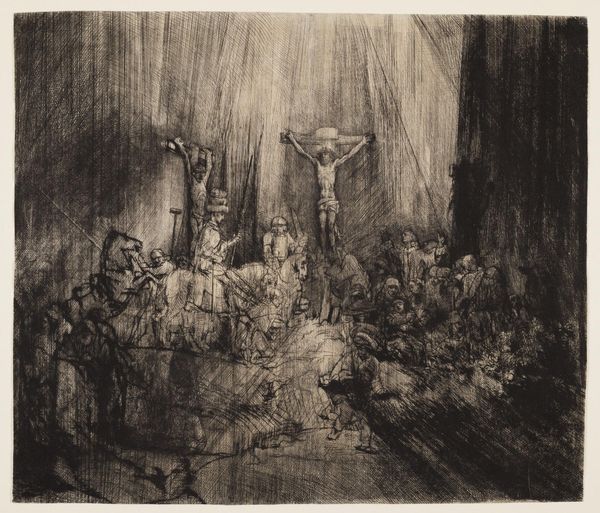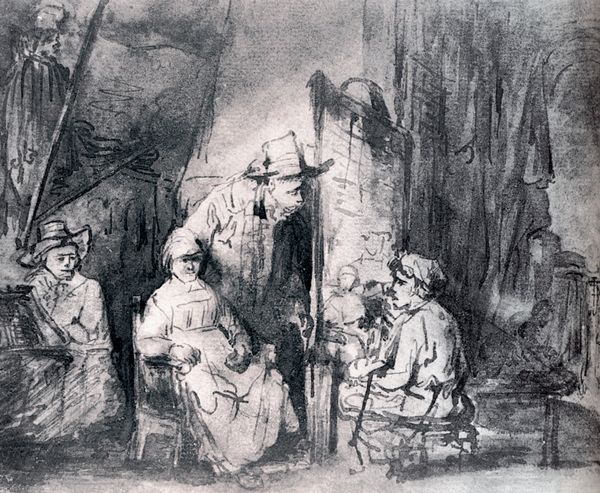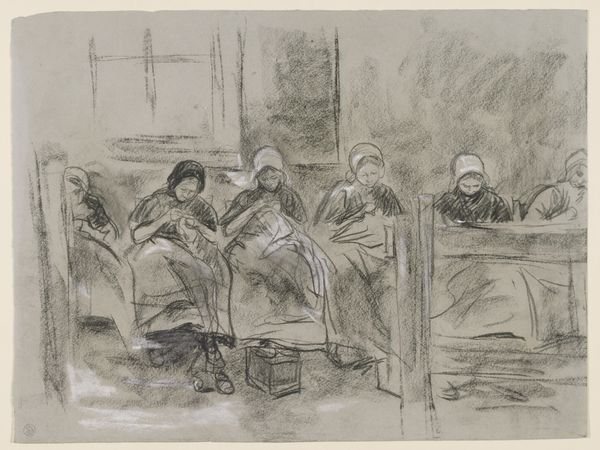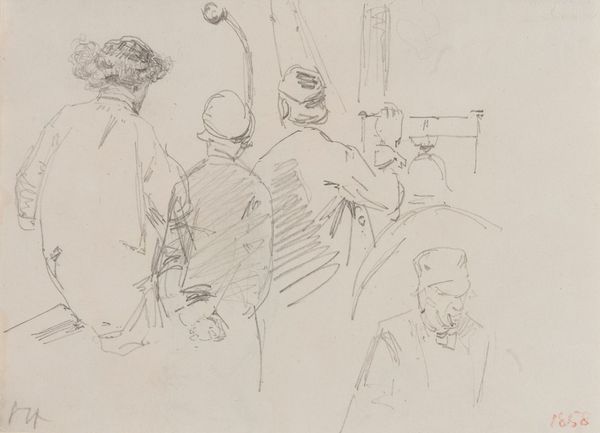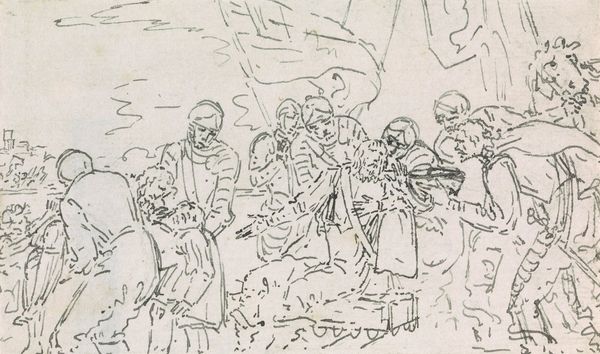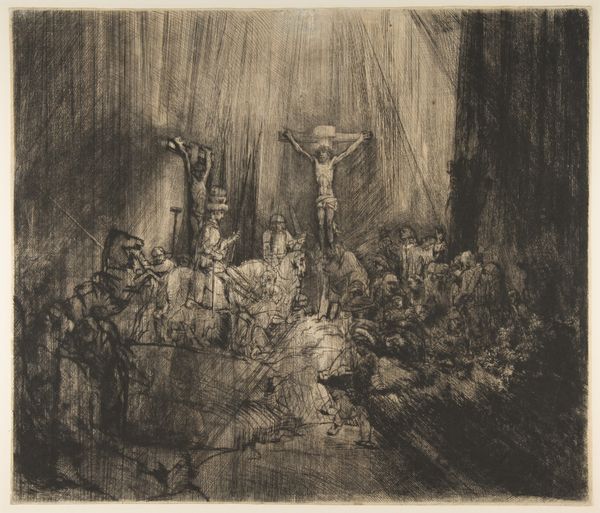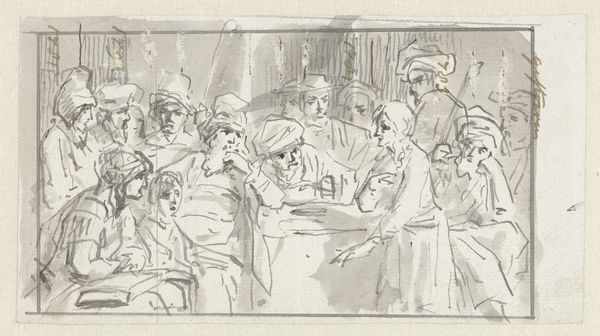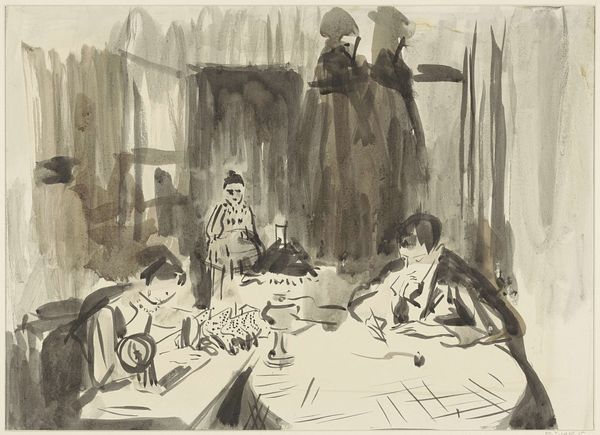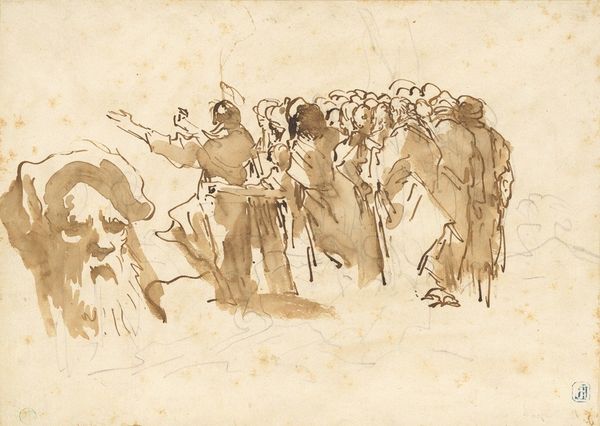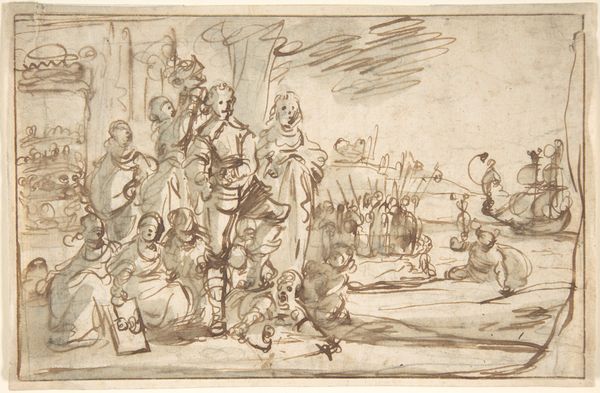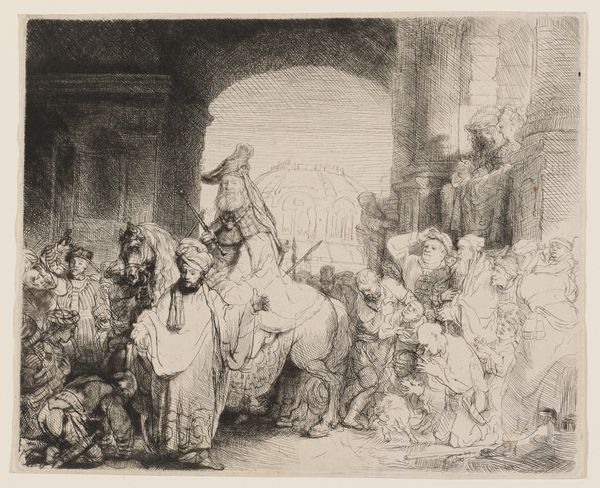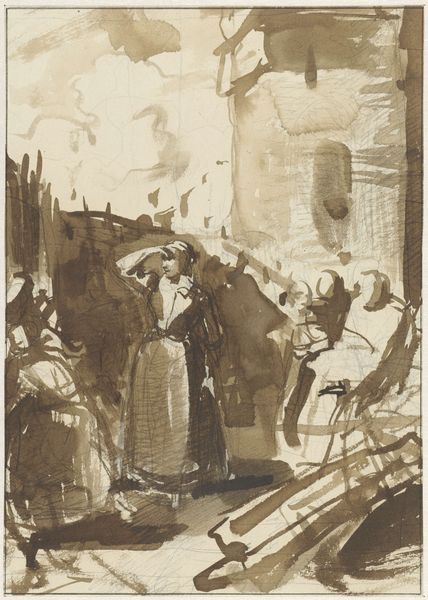
drawing, watercolor, ink
#
portrait
#
drawing
#
figuration
#
watercolor
#
ink
#
orientalism
#
watercolour illustration
#
genre-painting
#
watercolor
Dimensions: height 200 mm, width 310 mm
Copyright: Rijks Museum: Open Domain
Editor: This drawing, titled "Bijeenkomst van mannen" or "Meeting of Men," created before 1910 by H.C. Louwerse, employs ink and watercolor to depict a gathering. There’s something quite mysterious about this piece. The light is very focused on the central gathering but diffused overall. What do you see in this piece? Curator: The appeal, I think, resides in the visual and cultural symbols. The turbans immediately denote a specific cultural memory, associating it, perhaps, with imagery of the Ottoman Empire or Persia for the Western viewer. These visual shorthands operate powerfully. Note the repetition. The recurring form of the turban creates a rhythm and establishes the collective identity of these men. Does that uniformity strike you as deliberate? Editor: Absolutely, it's hard to ignore. I guess I’m still stuck on the focused light. The lighter hues almost suggest a shared aura. Curator: Consider what that light is illuminating, not just spatially, but psychologically. It highlights the center of the meeting – their shared purpose or discussion. Light here isn’t merely representational; it embodies revelation and clarity. Editor: So the artist uses the light, and the symbol of the turban, to really hammer home the purpose of their gathering. Is that a fair assumption? Curator: Indeed. It is an interplay of signifiers, directing us not just to what we see, but what these symbols have meant and continue to evoke. This is where the emotional and intellectual resonance of art takes hold. Editor: I never really thought about how loaded artistic choices can be. Seeing art this way adds another layer to my appreciation. Curator: Exactly, every detail carries symbolic weight. Recognizing this deepens our interaction, enriching the artistic experience immeasurably.
Comments
No comments
Be the first to comment and join the conversation on the ultimate creative platform.
